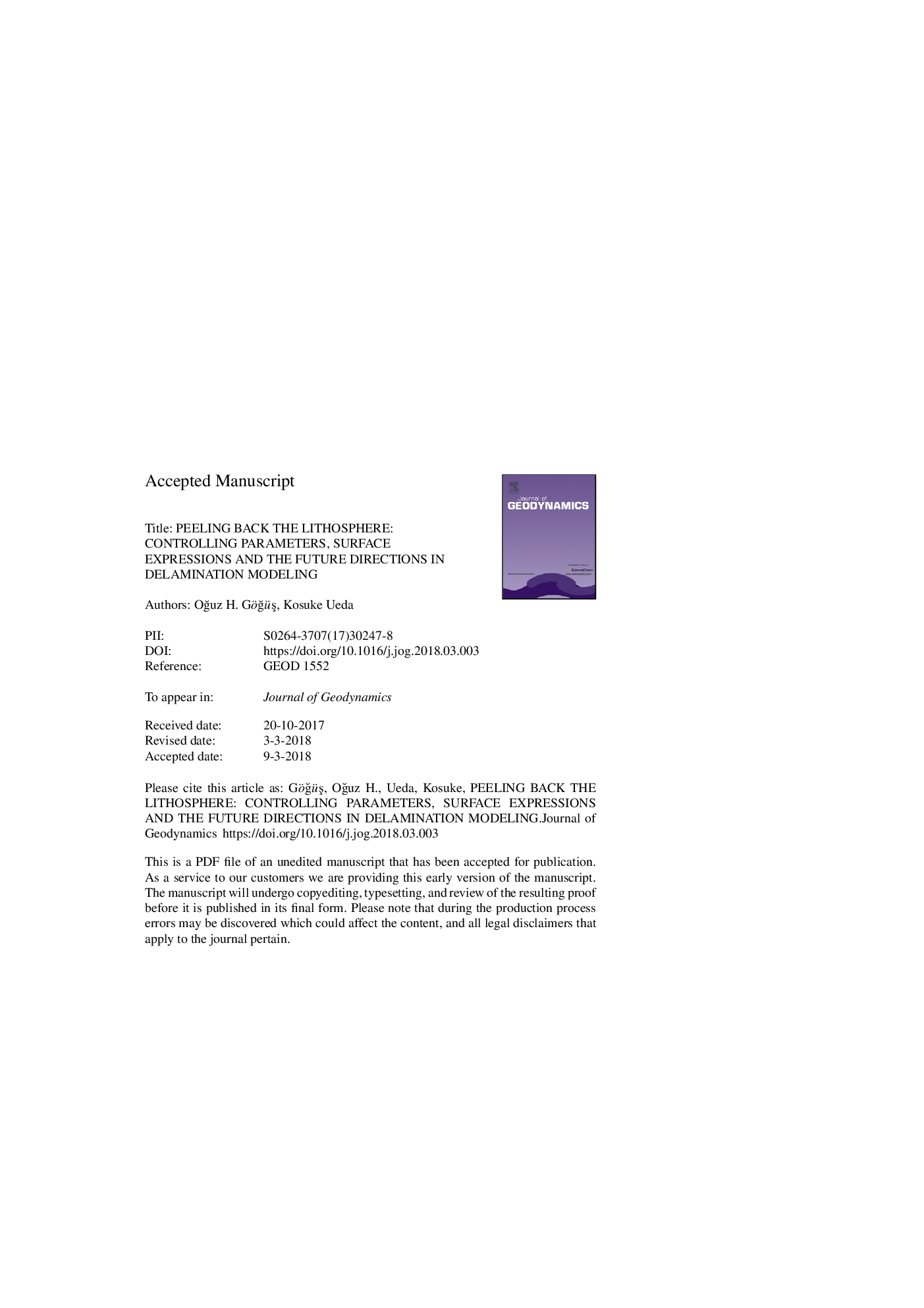| Article ID | Journal | Published Year | Pages | File Type |
|---|---|---|---|---|
| 8908406 | Journal of Geodynamics | 2018 | 73 Pages |
Abstract
Geodynamical models investigate the rheological and physical properties of the lithosphere that peels back (delaminates) from the upper-middle crust. Meanwhile, model predictions are used to relate to a set of observations in the geological context to the test the validity of delamination. Here, we review numerical and analogue models of delamination from these perspectives and provide a number of first-order topics which future modeling studies may address. Models suggest that the presence of the weak lower crust that resides between the strong mantle lithosphere (at least 100 times more viscous/stronger) and the strong upper crust is necessary to develop delamination. Lower crustal weakening may be induced by melt infiltration, shear heating or it naturally occurs through the jelly sandwich type strength profile of the continental lithosphere. The negative buoyancy of the lithosphere required to facilitate the delamination is induced by the pre-existing ocean subduction and/or the lower crustal eclogitization. Surface expression of the peeling back lithosphere has a distinct transient and migratory imprint on the crust, resulting in rapid surface uplift/subsidence, magmatism, heating and shortening/extension. New generation of geodynamical experiments can explain how different types of melting (e.g hydrated, dry melting) occurs with delamination. Reformation of the lithosphere after removal, three dimensional aspects, and the termination of the process are key investigation areas for future research. The robust model predictions, as with other geodynamic modeling studies should be reconciled with observations.
Related Topics
Physical Sciences and Engineering
Earth and Planetary Sciences
Earth-Surface Processes
Authors
OÄuz H. GöÄüÅ, Kosuke Ueda,
